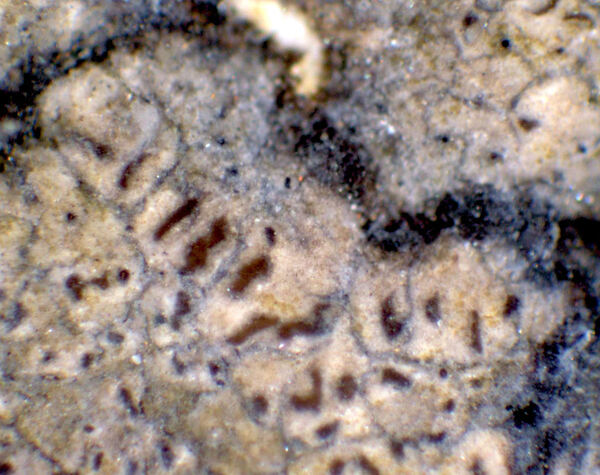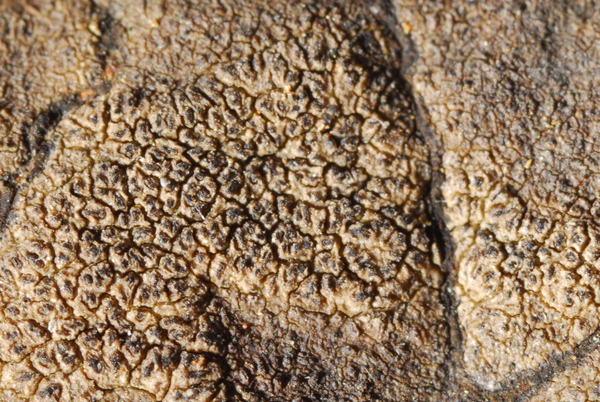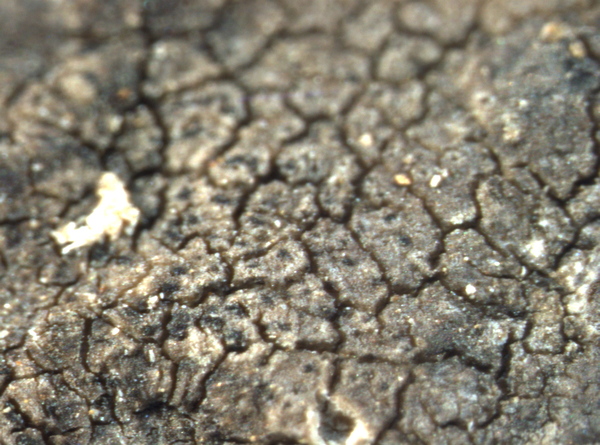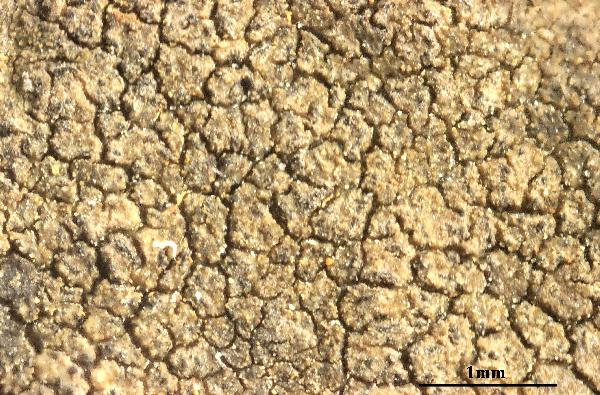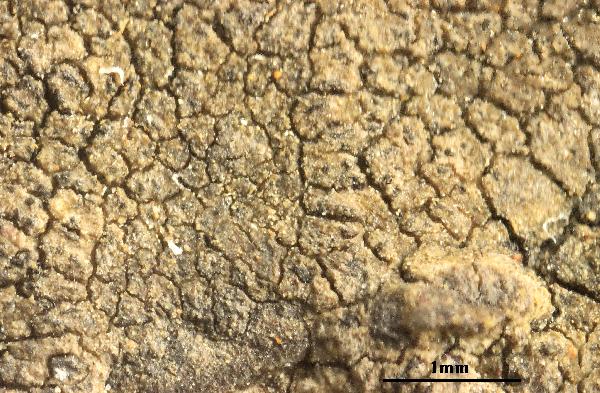Enterographa pitardii (B. de Lesd.) Redinger
Feddes Rep., 43: 68, 1938. Basionym: Stigmatidium pitardii B. de Lesd. in Pitard & Harmand - Bull. Soc. Bot. France, Mém. 22: 66, 1911.
Synonyms: Chiodecton pitardii (B. de Lesd.) Zahlbr.; Enterographa zaborskiana (M. Choisy & Werner) Egea & Torrente; Schismatomma zaborskianum M. Choisy & Werner
Distribution: S - Cal (Puntillo 1996, Sparrius 2004).
Description: Thallus crustose, episubstratic, rather thick, rimose-areolate, granulose, grey-brown to brown, usually delimited by a black prothalline line and often forming extended mosaics. Apothecia lirelliform, sometimes punctiform or ellipsoid, 0.1-0.2 x 0.07-0.1 mm, brown to black, immersed in the thallus, with a flat to slightly convex disc, and a usually indistinct proper margin. Proper exciple much reduced, brown, often poorly evident; epithecium orange-brown, scarcely delimited from hymenium; hymenium colourless, 100-125 μm high, I+ reddish; paraphysoids branched and anastomosing, especially in upper part, 1-1.5(-2) μm thick, the apical cells only slightly larger. Asci 8-spored, cylindrical or cylindrical-clavate, fissitunicate, the apical dome with a short ocular chamber surrounded by a minute, K/I+ dark blue ring, the inner wall often K/I+ pale blue. Ascospores (4-)5-6-septate, hyaline, spindle-shaped, straight o slightly curved, (22-)25-30(-35) x 3-5 μm. Pycnidia black, immersed. Conidia bacilliform, straight, 5-8 x c. 1 μm. Photobiont trentepohlioid. Spot tests: thallus K-, C-, KC-, P-, UV-, K/UV+ mauve. Chemistry: thallus with confluentic acid.Note: a mild-temperate, mainly western lichen known from the Azores, Italy and Greece, found on siliceous rocks in humid-shaded situations at low elevations.
Growth form: Crustose
Substrata: rocks
Photobiont: Trentepohlia
Reproductive strategy: mainly sexual
Restricted to humid-warm, oceanic areas
Commonnes-rarity: (info)
Alpine belt: absent
Subalpine belt: absent
Oromediterranean belt: absent
Montane belt: absent
Submediterranean belt: absent
Padanian area: absent
Humid submediterranean belt: absent
Humid mediterranean belt: extremely rare
Dry mediterranean belt: absent
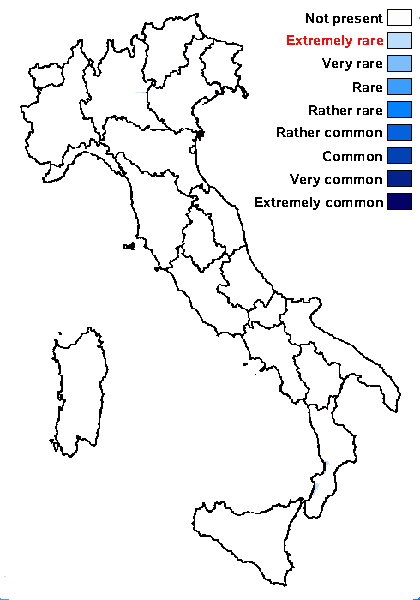
Predictive model
Herbarium samples
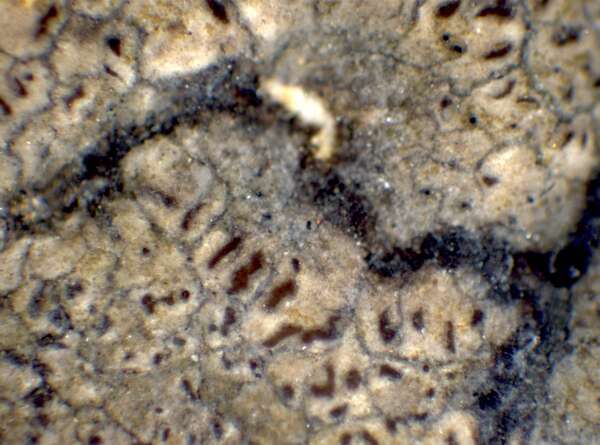

P.L. Nimis; Owner: Department of Life Sciences, University of Trieste
Herbarium: TSB (12266)
2001/11/24
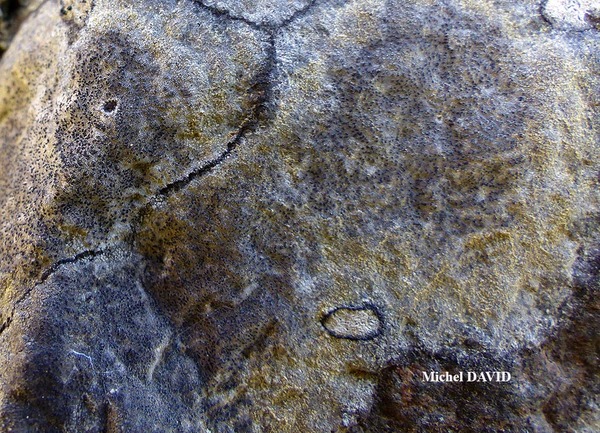
Michel David - Source: http://www.lichensmaritimes.org/index.php?task=fiche&lichen=330&lang=en
France, Belbeoch
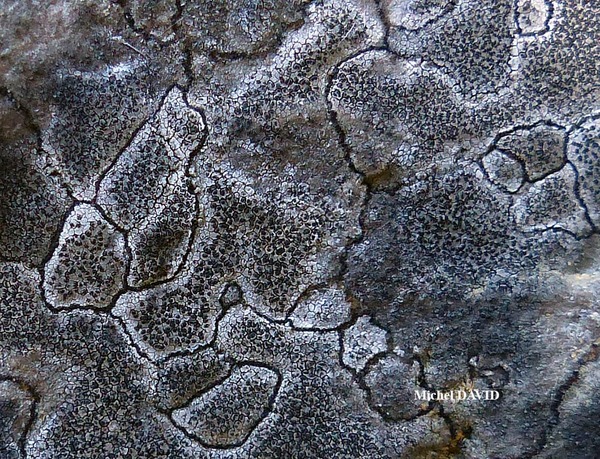
Michel David - Source: http://www.lichensmaritimes.org/index.php?task=fiche&lichen=330&lang=en
France, Belbeoch
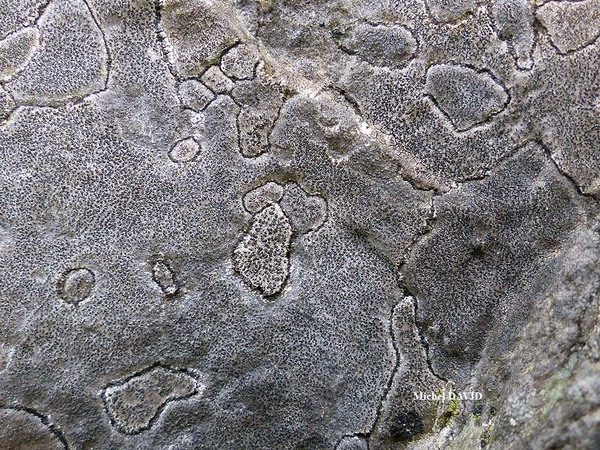
Michel David - Source: http://www.lichensmaritimes.org/index.php?task=fiche&lichen=330&lang=en
France, Belbeoch
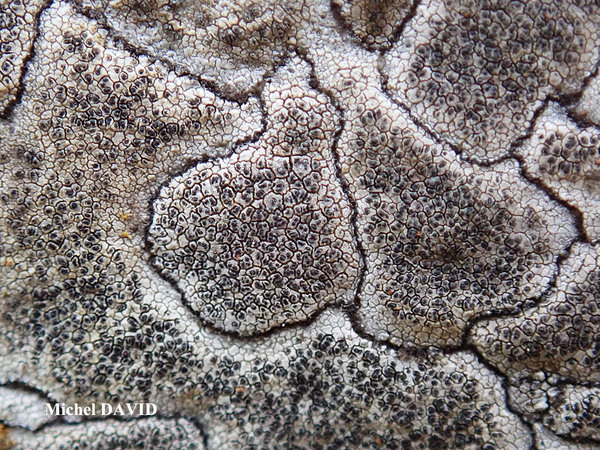
Michel David - Source: http://www.lichensmaritimes.org/index.php?task=fiche&lichen=330&lang=en
France, Belbeoch
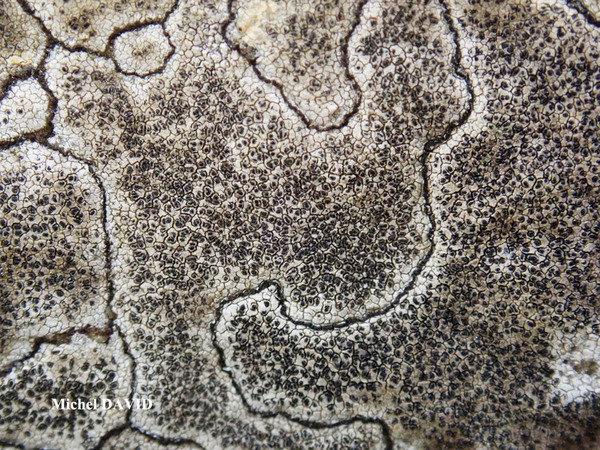
Michel David - Source: http://www.lichensmaritimes.org/index.php?task=fiche&lichen=330&lang=en
France, Belbeoch

Michel David - Source: http://www.lichensmaritimes.org/index.php?task=fiche&lichen=330&lang=en
France, Belbeoch

Michel David - Source: http://www.lichensmaritimes.org/index.php?task=fiche&lichen=330&lang=en
France, Belbeoch
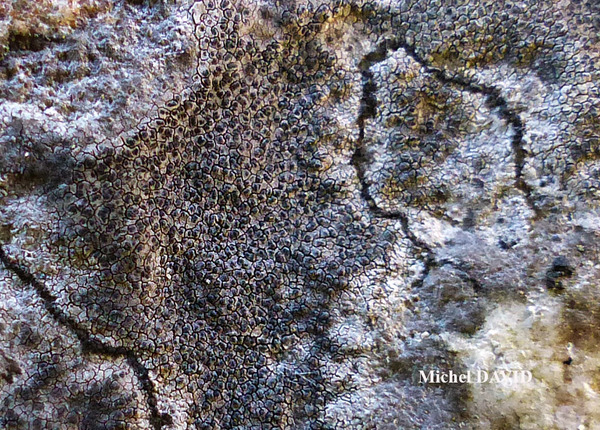
Michel David - Source: http://www.lichensmaritimes.org/index.php?task=fiche&lichen=330&lang=en
France, Belbeoch
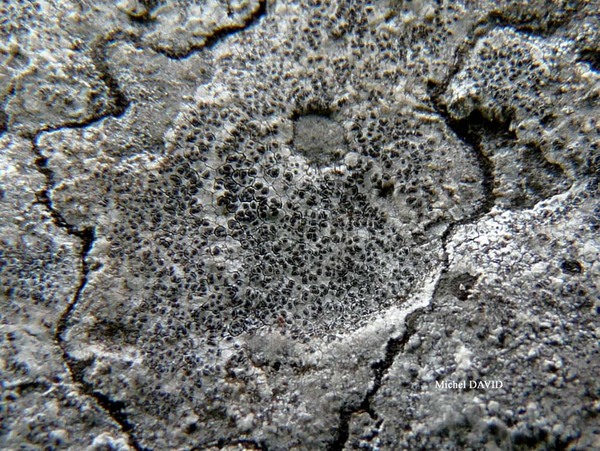
Michel David - Source: http://www.lichensmaritimes.org/index.php?task=fiche&lichen=330&lang=en
France, Camaret

Michel David - Source: http://www.lichensmaritimes.org/index.php?task=fiche&lichen=330&lang=en
France
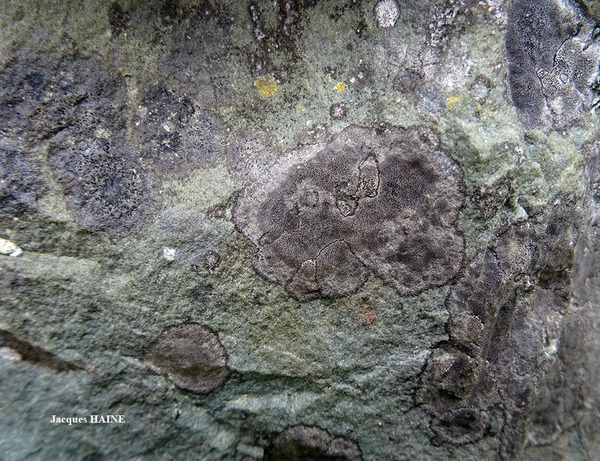
Jacques Haine - Source: http://www.lichensmaritimes.org/index.php?task=fiche&lichen=330&lang=en
France, Belbeoch
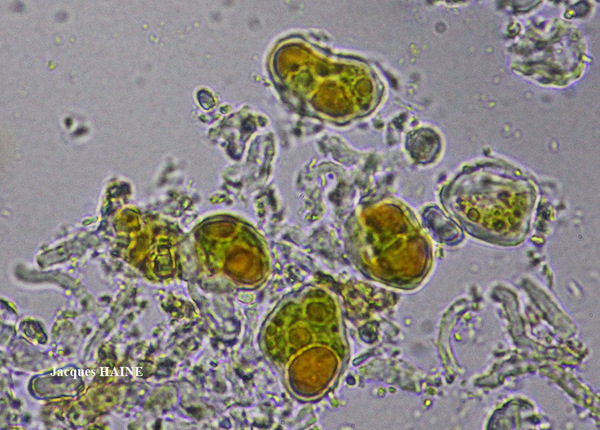
Jacques Haine - Source: http://www.lichensmaritimes.org/index.php?task=fiche&lichen=330&lang=en
France, Belbeoch

Jacques Haine - Source: http://www.lichensmaritimes.org/index.php?task=fiche&lichen=330&lang=en
France, Belbeoch
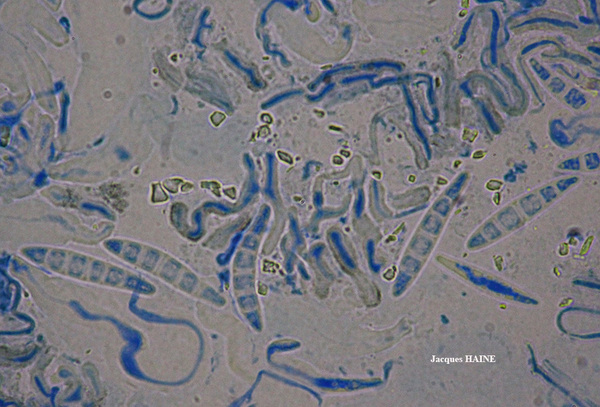
Jacques Haine - Source: http://www.lichensmaritimes.org/index.php?task=fiche&lichen=330&lang=en
France, Belbeoch
Growth form: Crustose
Substrata: rocks
Photobiont: Trentepohlia
Reproductive strategy: mainly sexual
Restricted to humid-warm, oceanic areas
Commonnes-rarity: (info)
Alpine belt: absent
Subalpine belt: absent
Oromediterranean belt: absent
Montane belt: absent
Submediterranean belt: absent
Padanian area: absent
Humid submediterranean belt: absent
Humid mediterranean belt: extremely rare
Dry mediterranean belt: absent

Predictive model
| Herbarium samples |


P.L. Nimis; Owner: Department of Life Sciences, University of Trieste
Herbarium: TSB (12266)
2001/11/24

Michel David - Source: http://www.lichensmaritimes.org/index.php?task=fiche&lichen=330&lang=en
France, Belbeoch

Michel David - Source: http://www.lichensmaritimes.org/index.php?task=fiche&lichen=330&lang=en
France, Belbeoch

Michel David - Source: http://www.lichensmaritimes.org/index.php?task=fiche&lichen=330&lang=en
France, Belbeoch

Michel David - Source: http://www.lichensmaritimes.org/index.php?task=fiche&lichen=330&lang=en
France, Belbeoch

Michel David - Source: http://www.lichensmaritimes.org/index.php?task=fiche&lichen=330&lang=en
France, Belbeoch

Michel David - Source: http://www.lichensmaritimes.org/index.php?task=fiche&lichen=330&lang=en
France, Belbeoch

Michel David - Source: http://www.lichensmaritimes.org/index.php?task=fiche&lichen=330&lang=en
France, Belbeoch

Michel David - Source: http://www.lichensmaritimes.org/index.php?task=fiche&lichen=330&lang=en
France, Belbeoch

Michel David - Source: http://www.lichensmaritimes.org/index.php?task=fiche&lichen=330&lang=en
France, Camaret

Michel David - Source: http://www.lichensmaritimes.org/index.php?task=fiche&lichen=330&lang=en
France

Jacques Haine - Source: http://www.lichensmaritimes.org/index.php?task=fiche&lichen=330&lang=en
France, Belbeoch

Jacques Haine - Source: http://www.lichensmaritimes.org/index.php?task=fiche&lichen=330&lang=en
France, Belbeoch

Jacques Haine - Source: http://www.lichensmaritimes.org/index.php?task=fiche&lichen=330&lang=en
France, Belbeoch

 INDEX FUNGORUM
INDEX FUNGORUM
 GBIF
GBIF
